By Nicki Richesin, The Children’s Book Review
Published: January 9, 2012
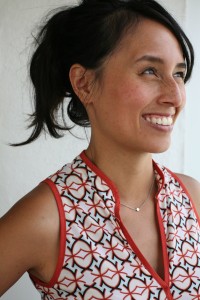
Bestselling author and illustrator, LeUyen Pham, began her career as a layout artist for DreamWorks Feature Animation. She wrote and illustrated All The Things I Love About You and Big Sister, Little Sister and is the illustrator of numerous other picture books. LeUyen maintains a blog with regular updates about her forthcoming titles. She lives in San Francisco with her husband, artist Alex Puvilland, and two sons.
Nicki Richesin: You made a rather dramatic exit from Saigon when you were two years old. Does your Vietnamese ancestry influence your work at all?
LeUyen Pham: I don’t think it does in the way that you mean. I never studied Vietnamese art in school, nor did we ever have much in the manner of art around our house. We were an immigrant family, refugees, and art was not a big part of our childhood. But I think the Vietnamese work ethic has definitely affected how I work. I’m one of those illustrators who will remained strapped to the drawing for days on end if somebody doesn’t stop me, and I have a hard time separating what I’d call from what I’d do on my own free time anyway. If I’m not staying busy, I tend to go a bit nutty. I think my mother was the same – she always seemed to be juggling multiple jobs, multiple projects. Sundays were no more or less a day of rest than Mondays for her.
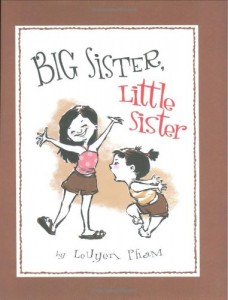 Your first book (that you wrote as well as illustrated) was the lovely Big Sister, Little Sister. Why did you want to write this book for your sister?
Your first book (that you wrote as well as illustrated) was the lovely Big Sister, Little Sister. Why did you want to write this book for your sister?
LP: That book is so funny to me. It was originally written as a birthday present for my sister, laced with vignettes and comments that I thought only she would understand and find funny. We were on vacation together in Italy when I gave it to her. I remember we had just gotten into a big fight, too, about where to eat dinner. We had returned to our hotel room, and we were both being pouty. I tossed her the gift, rather off-handedly, saying something like, “Well, here’s your present anyway.” And she opened it, read it, started crying. And then we both got all emotional together, and went out for a gelato.
I hadn’t intended for it to be published, but when one of my editors first saw it, she immediately wanted to send it to print. I guess that’s the beauty of that particular book, the theme is so universal and relatable that I could have written it for any sister out there. But in the true theme of the book, once it was published, my sister called me up to ask for her share of the royalties. Sisters!
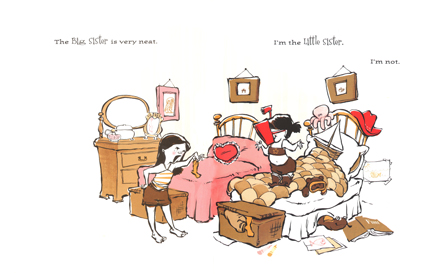
You’ve illustrated picture books for some very famous authors like Archbishop Desmond Tutu (God’s Dream) and Julianne Moore (the Freckleface Strawberry series). Did you collaborate with them on these projects or did you have the freedom to interpret their work in your own way?
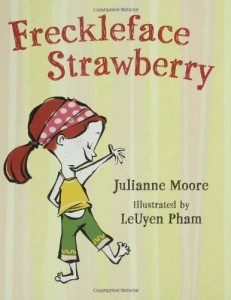 LP: In both cases you mentioned, I was lucky enough to have some very smart and considerate editors who sort of let me have at it first. I think it was for my own protection more than anything, and probably a good thing, as I was admirer of both authors. In the case of Freckleface Strawberry, I was actually living in Paris for a while, and sketched her at cafes. Consequently, she’s a pretty savvy fashionista. Julie seemed thrilled with how I’d interpreted her, and that cemented our trust in each other as author/illustrator. Now Freckleface comes so easily to me, in terms of her emotional responses and gestures that I don’t think even my editor would suggest too many changes.
LP: In both cases you mentioned, I was lucky enough to have some very smart and considerate editors who sort of let me have at it first. I think it was for my own protection more than anything, and probably a good thing, as I was admirer of both authors. In the case of Freckleface Strawberry, I was actually living in Paris for a while, and sketched her at cafes. Consequently, she’s a pretty savvy fashionista. Julie seemed thrilled with how I’d interpreted her, and that cemented our trust in each other as author/illustrator. Now Freckleface comes so easily to me, in terms of her emotional responses and gestures that I don’t think even my editor would suggest too many changes.
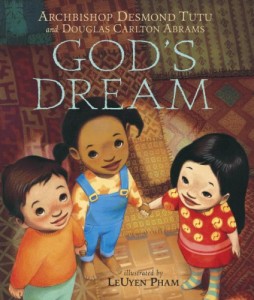 With Archbishop Tutu, I found an equal amount of liberty. In fact, I even recall an instance where the editor called for a change to an image that she found to be too controversial, I think it was an image of children praying in different manners around the world. I was asked to remove them from the thumbnails, but when Archbishop Tutu saw them missing, he insisted that the image be returned. So he was sort of my partner-in-crime, on that one. In fact, his daughter Mpho Tutu, who is a reverend in her own right, loved that particular piece so much that I gave it to her as a gift.
With Archbishop Tutu, I found an equal amount of liberty. In fact, I even recall an instance where the editor called for a change to an image that she found to be too controversial, I think it was an image of children praying in different manners around the world. I was asked to remove them from the thumbnails, but when Archbishop Tutu saw them missing, he insisted that the image be returned. So he was sort of my partner-in-crime, on that one. In fact, his daughter Mpho Tutu, who is a reverend in her own right, loved that particular piece so much that I gave it to her as a gift.
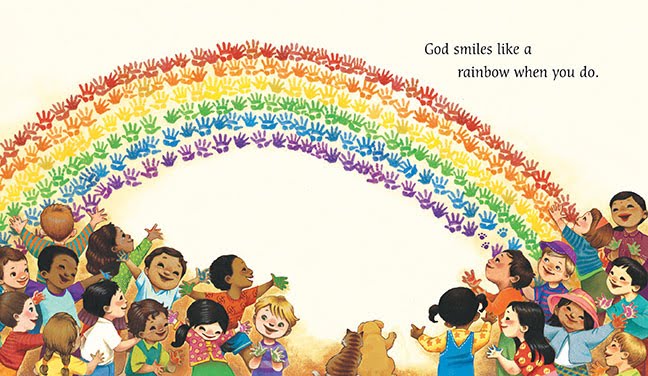
Could you walk us through the first steps you take when you begin sketching and dreaming about the book you’ve agreed to illustrate? How do you choose the books you want to work on?
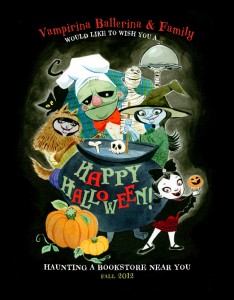 LP: My main requirement is that on the initial reading of the manuscript, I have to immediately have a vision of the story in my head. That sounds simple enough, but you’d be surprised at the number of manuscripts out there that are visually very limiting. Stories with excessive word counts, embellishments, over-whelming descriptions, are always turn-offs. I always find that the best picture books operate on two tracks – the oral rhythmic speech (the story ALWAYS has to read well aloud), and the parallel visual story. Sometimes the two aren’t telling the same story, though they’re servicing the same script. Or for instance, in a book I completed just recently called Vampirina Ballerina (Hyperion Books for Children), the story is actually an instruction manual for a vampire who would like to become a ballerina (i.e. “Take night classes,” “You won’t be able to look in the mirror for proper form,” “Don’t bite the other students”). But the accompanying visual story is really about a young outsider who finds a way to achieve her goals without losing her identity. The emotional resonance I put in the character reflected me as a child, never quite fitting in, being an AWFUL ballet dancer, and wearing a bathing suit rather than a leotard to class. Finding that emotional turning point for me was key to making the manuscript more than it was.
LP: My main requirement is that on the initial reading of the manuscript, I have to immediately have a vision of the story in my head. That sounds simple enough, but you’d be surprised at the number of manuscripts out there that are visually very limiting. Stories with excessive word counts, embellishments, over-whelming descriptions, are always turn-offs. I always find that the best picture books operate on two tracks – the oral rhythmic speech (the story ALWAYS has to read well aloud), and the parallel visual story. Sometimes the two aren’t telling the same story, though they’re servicing the same script. Or for instance, in a book I completed just recently called Vampirina Ballerina (Hyperion Books for Children), the story is actually an instruction manual for a vampire who would like to become a ballerina (i.e. “Take night classes,” “You won’t be able to look in the mirror for proper form,” “Don’t bite the other students”). But the accompanying visual story is really about a young outsider who finds a way to achieve her goals without losing her identity. The emotional resonance I put in the character reflected me as a child, never quite fitting in, being an AWFUL ballet dancer, and wearing a bathing suit rather than a leotard to class. Finding that emotional turning point for me was key to making the manuscript more than it was.
You’re a mentor with the Motivarti Mentors Program. How important is it to you to make time to encourage and help young artists?
LP: I used to teach a while back, but found that it was actually extremely difficult to motivate others while maintaining my own identity as an artist. When you teach, the energy level required is extremely high, and you come home exhausted and not wanting to do your own work. I had to stop teaching as a consequence, but I’ve really really missed it. So when I got emails from students and young artists looking for advice, I’m always very keen on giving lots of advice if I can. With two young kids, that’s not always the easiest thing to do, but I try. I remember how important mentors were for me as a fledgling artist, and how much their words carry weight even to this day. I’d hardly expect my own words to be so far-reaching, but nowadays, it’s such a difficult business, and any words or advice I can offer up I will. Although sometimes students won’t like what I have to say! As a teacher, I think I had a reputation for being rather critical. But my goal in critiques was not to give the students my own opinion, but to get them to give theirs, to self-analyze and improve their work on their own. Because of course after you graduate, you’re facing that drawing table alone!
Your husband Alex Puvilland is also an artist. Do you ever work together and if so, do you have any future projects percolating?
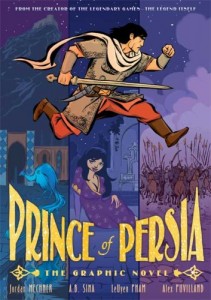 LP: Besides our two kids you mean? Which believe me, are projects unto themselves. My husband and I used to work in animation together, actually, back in the day when we were young students fresh from school. The first time I met him, he didn’t speak much English, but he was already an amazing draftsman. We didn’t get together until years later. And we only started working on a joint project about five years ago. I had been offered the manuscript for The Prince of Persia by Mark Siegel. I had never worked with him personally before but he had seen my work when he was a designer at Simon and Schuster. I had illustrated a book there called Twenty One Elephants by Phil Bildner, a historically based picture book based in Brooklyn about the Brooklyn Bridge. I must have really impressed Mark with that book, because I had completed in record time, about three months from when I was handed the manuscript to when I delivered the art. I think it was my speed that affected him the most, because when he offered me the script for Prince of Persia, he warned me that it came with a deadline of nine months. It was a 180 page book! I don’t think he offered it to many artists, because I think most artists would have thought him crazy. And honestly, if I were more of a sane person, I would have felt the same. But for some reason, the only reason I thought of rejecting it was because at the time he offered me the script, I was two months pregnant and hadn’t told anyone in the publishing world yet. I talked it over with Alex. He works as a production illustrator for Dreamworks Feature Animation. His first love, however, has always been comics, having been raised in France where graphic novels are read as commonly as any other novel. While we were discussing the offer Mark had made me, I realized that Alex would be the PERFECT person to illustrate this story with. Not only is he an amazing artist with a very acute gift for storytelling, but he was also a true comic book connoisseur. So what that we had never worked on a project together before? And with Alex at the helm, we would be sure to make the deadline. Alex was hesitant at first to do it—probably wisely more concerned than I about us working together. But he finally agreed, and we suggested it to Mark, who was immediately enthusiastic about it. Mark had been looking for an excuse to work with Alex for a while anyway, and this would be a good point to start. And between the two of us, we managed to not only make the deadline, but we also turned the book in a couple weeks early. This, of course, was mostly because the due date of the book coincided with the due date of our baby. We had many many arguments about story interpretation to design and our artist egos were definitely bruised along the way, but over all, it was great practice for having a baby. We were forced to make decisions together, we learned how to compromise, and we felt the inexplicable pleasure of having accomplished something we both were proud of.
LP: Besides our two kids you mean? Which believe me, are projects unto themselves. My husband and I used to work in animation together, actually, back in the day when we were young students fresh from school. The first time I met him, he didn’t speak much English, but he was already an amazing draftsman. We didn’t get together until years later. And we only started working on a joint project about five years ago. I had been offered the manuscript for The Prince of Persia by Mark Siegel. I had never worked with him personally before but he had seen my work when he was a designer at Simon and Schuster. I had illustrated a book there called Twenty One Elephants by Phil Bildner, a historically based picture book based in Brooklyn about the Brooklyn Bridge. I must have really impressed Mark with that book, because I had completed in record time, about three months from when I was handed the manuscript to when I delivered the art. I think it was my speed that affected him the most, because when he offered me the script for Prince of Persia, he warned me that it came with a deadline of nine months. It was a 180 page book! I don’t think he offered it to many artists, because I think most artists would have thought him crazy. And honestly, if I were more of a sane person, I would have felt the same. But for some reason, the only reason I thought of rejecting it was because at the time he offered me the script, I was two months pregnant and hadn’t told anyone in the publishing world yet. I talked it over with Alex. He works as a production illustrator for Dreamworks Feature Animation. His first love, however, has always been comics, having been raised in France where graphic novels are read as commonly as any other novel. While we were discussing the offer Mark had made me, I realized that Alex would be the PERFECT person to illustrate this story with. Not only is he an amazing artist with a very acute gift for storytelling, but he was also a true comic book connoisseur. So what that we had never worked on a project together before? And with Alex at the helm, we would be sure to make the deadline. Alex was hesitant at first to do it—probably wisely more concerned than I about us working together. But he finally agreed, and we suggested it to Mark, who was immediately enthusiastic about it. Mark had been looking for an excuse to work with Alex for a while anyway, and this would be a good point to start. And between the two of us, we managed to not only make the deadline, but we also turned the book in a couple weeks early. This, of course, was mostly because the due date of the book coincided with the due date of our baby. We had many many arguments about story interpretation to design and our artist egos were definitely bruised along the way, but over all, it was great practice for having a baby. We were forced to make decisions together, we learned how to compromise, and we felt the inexplicable pleasure of having accomplished something we both were proud of.
Following Prince of Persia, Mark offered us another manuscript by the same creator, Jordan Mechner. This was to be a massive endeavor, a historical graphic novel about the Templar Knights called Solomon’s Thieves. I think the title has changed, but what started out to be a three book collection has turned into a whopping 400+ book. We’re just finishing it up now, and I can tell you it’s a whopper. I think we’d like to work together again, as it’s a lot of fun to work with your partner on things. We’re one of those really rare couples who can work very well together (thank goodness!).
You recently published Freckleface Strawberry: Best Friends Forever. Freckleface Strawberry has been made into a musical. Have you seen it and what can you tell us about it? Were you at all involved in the production?
LP: I did see it, when it had its official opening. Julie was there, red-carpet and all. It was really weird to see, to be honest! In a good way, of course. I think I’m considered an official creative partner, but really I got to view some of the set designs and sign off on them. I didn’t really know what to expect until the curtain went up, and there was my book, blown to larger-than-life size on the stage. And there were props and costumes, all inspired by the book. It was surreal! I felt like asking if I could take some of the props home! The musical is great, amazingly fun, and the main character has been interpreted in such a lovely way. I kind of wish that if the book goes into a T.V. series, they could get the main star of the musical to do the voice. And of course, the set designer and the director spoke with me afterwards, and told me how capturing the look of the book was their main goal in the design. It was really pretty cool. Even now, I get friends in New York texting me or emailing me photos of Freckleface on bus stops, posters, kiosks, etc.
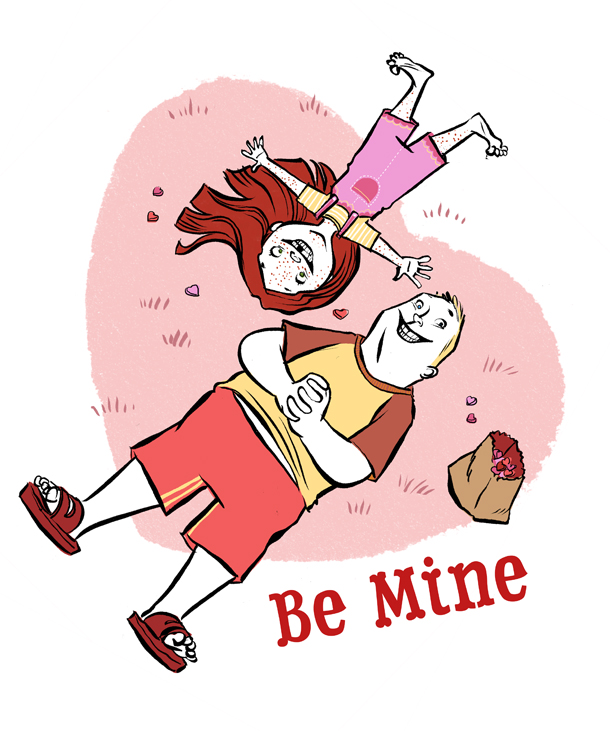
With which authors would you most like to work? Do you have any books you’re still dreaming of illustrating?
LP: Of course! I’ve got lots and lots of ideas I’d like to bring out. It’s taken me years, but I think I’ve finally reached a point where I’m focusing on my own stories. I think I’ve never felt as comfortable with words as I am with a paintbrush. But I’m not finding that my pictures are driving the stories so much more now, and I even find myself wanting to change some of the manuscripts I’m given. So that’s definitely a sign to write my own stuff. I’ve got one I’m working on next year called There’s No Such Thing As Little (Bloomsbury), a sort of concept book about little being a state of mind. And I’m working on a manuscript about an octopus at the moment. And just lots and lots of ideas. As for other writers, there are too many to count. I’m illustrating a book for Jerry Spinelli next year, which I’m looking forward to. But what’s funny is that I’d love to illustrate a book for someone outside of the world of children’s writers. I keep wishing Diablo Cody would send me something. Or if David Sedaris ever felt like having one of his animal tales illustrated, I’d beg for that job.
Is it true that you have a pet monkey?
LP: Only if you count my husband. And now two little boys too.
Nicki Richesin is the editor of four anthologies,What I Would Tell Her: 28 Devoted Dads on Bringing Up, Holding On To, and Letting Go of Their Daughters; Because I Love Her: 34 Women Writers Reflect on the Mother-Daughter Bond; Crush: 26 Real-Life Tales of First Love; and The May Queen: Women on Life, Work, and Pulling it all Together in your Thirties. Her anthologies have been excerpted and praised in The New York Times, the San Francisco Chronicle, The Boston Globe, Redbook, Parenting, Cosmopolitan, Bust, Salon, Daily Candy, and Babble.

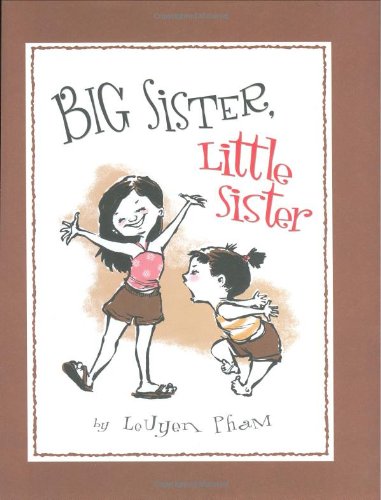
1 Comment
Pingback: Ilustrações de LeUyen Pham – Leituras dos girassóis